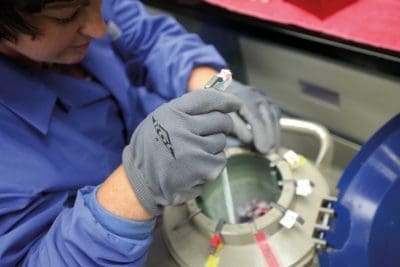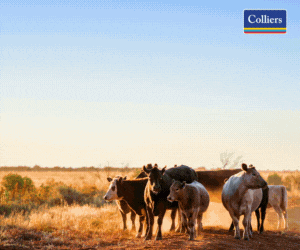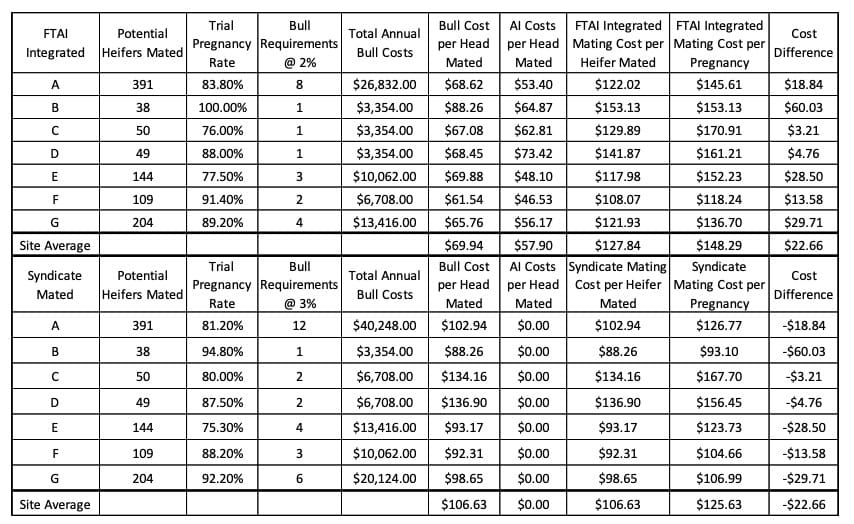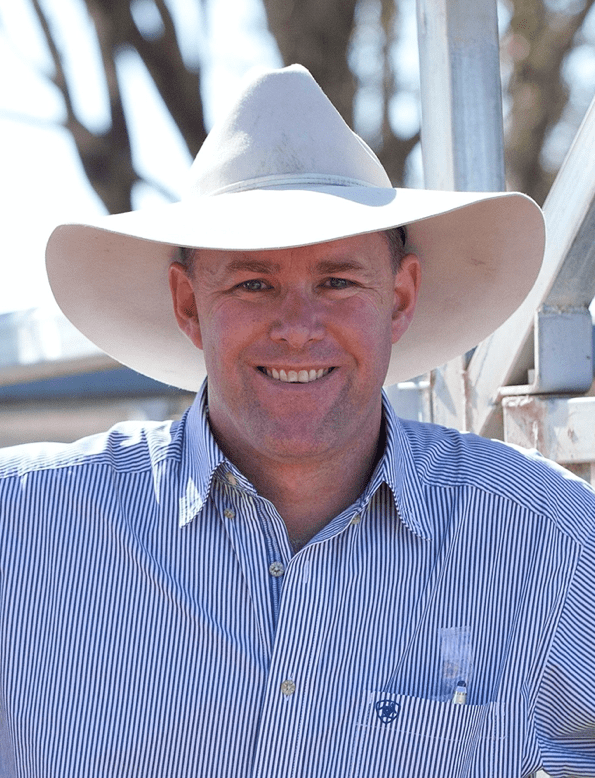Tonight’s weekly genetics review, the last in the Autumn 2024 series, continues last week’s exploration of costing AI programs in commercial beef herds. Click here to view last week’s opening discussion. Al Rayner’s Weekly Genetics reviews will now go into recess, recommencing for the spring bull selling season in July….
UNDERSTANDING the cost associated with implementing breeding technologies such as Fixed Time AI does require taking a step back to consider a number of factors contributing to both success and the overall cost of the program.
 Following on from last week’s column outlining the factors that contribute to the success of an FTAI program, this week the focus shifts to understanding the costs of such a program.
Following on from last week’s column outlining the factors that contribute to the success of an FTAI program, this week the focus shifts to understanding the costs of such a program.
Setting a clear basis for comparison of the costs of a FTAI program with a natural mating program is to ensure that each system is being compared accurately against the other. The recent article regarding the costs of AI presented by Bush Agribusiness saw much of the feedback received focus on the costs described within the article.
Cost per conception Vs cost per ‘attempt’
It is important to understand there is a difference between the cost of FTAI per animal inseminated and the cost of actually rearing a calf to weaning. It is possible that many readers of this article overlooked the costs quoted as part of the analysis were quoted on the basis of cost per conception, not cost per attempt.
This difference is a significant one to note ahead of any comparison. It is often very tempting to rationalise costs of any undertaking by working out the cost associated by the number of animals within a program. In the case of FTAI, there are many producers who will firstly determine the number of heifers they wish to include in an FTAI program, and then work out the cost associated on a per head basis.
So, what does it cost to actually conduct an FTAI program per head? A number of commercial AI breeding representatives have provided a breakdown of their costs as a guide within this article.
Based on standard FTAI costs for CIDRs to synchronise heifers and for insemination, the industry average figure (averaged across several AI companies) came to a per head cost of $32.65. This contrasts sharply with the figures quoted by BushAgribusiness, highlighting that not all commercial enterprises are equal in enjoying the opportunities afforded by advanced reproduction.
The price paid for semen straws also varies and can significantly impact on the cost per head of a FTAI program. As noted in last weeks’ column, it is possible to collect and use semen from bulls already on-farm, which can reduce the cost per straw to below $10.
 However most producers would seek to purchase frozen semen straws for use. As a guide, using prices from the most recent National Herd Improvement Semen survey, which involved all semen companies operating in Australia, the average price for beef semen across all breeds including domestic and imported semen was $22.54 per dose. However, by way of comparison, the reported survey found the average price for Angus semen was $30.70 per straw.
However most producers would seek to purchase frozen semen straws for use. As a guide, using prices from the most recent National Herd Improvement Semen survey, which involved all semen companies operating in Australia, the average price for beef semen across all breeds including domestic and imported semen was $22.54 per dose. However, by way of comparison, the reported survey found the average price for Angus semen was $30.70 per straw.
It is worth noting that on a per head basis, the data presented by BushAgribusiness can be broken down into a cost per head mated to FTAI. On a per head basis, of the 1400 heifers enrolled in the study, the average semen cost per insemination in the data set was $29.40, while the average AI technician cost per head inseminated was reported at $43.83.
The difference between industry figures and those of the producers engaged in the BushAgribusiness study are pronounced – however in Bush Agribusiness’s analysis perhaps the differences in AI technician costs could be associated with the cost of travel.
To this point, cost of undertaking FTAI for most producers within their heifer cohort would appear to be relatively reasonable. However, on the basis of cost per conception, things can become radically different.
Placing the focus on what it actually costs to get a calf to be born through FTAI and raised to weaning is perhaps a more accurate evaluation of the cost of FTAI than is offered by working out the overall cost per head.
Achieving higher rates of conception to FTAI is not only desirable from a productivity perspective, but also ensures the cost of the program is spread out over more calves. Using the data provided by BushAgribusiness, of the 1400 heifers within the five programs, the average conception rate was 53pc.
So the value of the program has to be seen in the context of how much did it cost to get those 742 calves born and raised to weaning? When costs are seen from this perspective, it can change a few producers’ assumptions.
Three-year WA study
As noted last week, WA vet Dr Enoch Bergman and local Esperance WA producer groups ASHEEP and BEEF conducted a three-year PDS with the support of MLA, investigating the role of FTAI in commercial beef herds.
This project provides a number of valuable insights into the role of FTAI in commercial beef herds in real world situations, particularly in the area of cost and on the factors that contribute to the success of a program.
The PDS captured all costs associated with integrating FTAI into exactly half of the heifers which were randomly selected from the replacement heifer populations on ten different beef properties. The cost per head AI’d ranged from $46.53 to $73.42 for different producers, for an average of $57.90 per head AI’d. That included technician time, drug costs associated with synchronization, semen, and technician travel.
Comparing the cost of AI and the reproductive success rate of the two groups of heifers, Dr Bergmann was able to compare heifers enrolled in FTAI backed up at 2pc bulls to their siblings, which would have been mated at 3pc. With clear financial accounting, he found an additional cost of $22.66 per pregnancy when comparing heifers enrolled in FTAI and backed up by bulls versus strictly naturally-mated heifers.
Describing the result, Dr Bergman said, “We may have spent an additional $23 to AI them, but in the process, we improved overall pregnancy rate, reduced dystocia rates, reduced calf losses, reduced heifer losses, improved weaning weights and absolutely smashed the rebreeding rate when we compared FTAI integrated heifers to their naturally mated heifers.”
“In the end, our producers were ahead by $80 per calf when the heifers were managed identically other than the integration of FTAI. It is no wonder we struggled to keep people in the program for three years, after the first year many pulled out to use FTAI for ALL of their heifers instead of half! It doesn’t get more real world than that!”
Data published below from the PDS demonstrates the total mating costs associated with both FTAI integrated mating programs (with a backup bull) and those naturally mated (table 1).

Click on image to enlarge. Source: L.PDS.1711: Improving Heifer Productivity by Integrating FTAI into Commercial Cow Enterprises
This data shows the differences producers experienced across a variety of programs on a variety of properties. Importantly, it reflects the diversity of enterprise size and scale and shows both the cost to undertake FTAI per head and the overall cost per conception, which is a key measure of success for any FTAI program or any breeding program for that matter.
Importantly the PDS also measured the return on Investment associated with the integration of FTAI into heifer mating programs.
As noted by Dr Bergman, producers within the trial ultimately saw a significant return to the value of their heifer’s calves, well above what may have initially appeared to be a costly undertaking. This data (presented below) shows the contribution that additional factors such as reduced dystocia losses, increased weaning weights and improved weaning weights will offer programs that undertaken FTAI.
To quote Dr Bergman, “Fixed Time AI is not just affordable, it is profitable!”

Source: L.PDS.1711: Improving Heifer Productivity by Integrating FTAI into Commercial Cow Enterprises. Click on image to enlarge.
While the PDS has included the major production parameters and assigned costs with producer input, it is important that producers don’t overlook some other basics.
One of the obvious things to consider is the availability of infrastructure and skills allowing producers to conduct FTAI both safely and efficiently. It is easy to overlook that not all properties have suitable facilities, including a crush that allows access for the technician.
Additionally, as noted by the team from BushAgribusiness, it is important to not overlook other incremental costs either. These should include unique costs incurred by some producers (i.e. any additional costs that result from undertaking the AI program that would not otherwise have been incurred, i.e. labour, mustering, hay etc) and these considerations must remain in the calculations from an individual producer’s perspective.
Important to recognise improved AI outcomes
However, as noted in last week’s column, the way FTAI programs are implemented on-farm have significantly changed over recent years. National sales manager for artificial breeding company Minitube, Megan Brown made the point that with “improved FTAI protocols and the availability of new products such as oestradiol cypionate, producers are now down to about three yardings, compared to older programs with upwards of five yardings being common. At the same time those producers are seeing the same, and in some cases more improved outcomes.”
This re-enforces a point made last week that comparing FTAI to natural matings requires producers to make comparisons on current methods, and not old perceptions based on technology that has been superseded.
Dr Bergman’s PDS demonstrates the use of FTAI conducted in a real-world environment. As he put it, “We essentially hijacked half of the heifers for a couple of weeks and then managed them identically thereafter.”
Ultimately there certainly are commercial producers that are not suited to undertaking FTAI in their mating programs. This can be due to the combination of infrastructure, location or inputs required to conduct a program effectively. However, there are also many other herds where FTAI offers significant advantages and opportunities for producers to address specific issues within their herd and to increase the overall efficiency within the breeding program.
While cost per pregnancy can be higher when looked at on this metric alone, the impact of reductions in dystocia, mortality and increases in weight and rebreeding rates, not only offset this cost but suggest FTIA is not as marginally valuable as some people may believe.
Links to reports about the ASHEEP and BEEF’s MLA Producer Demonstration Site project can be found here.
- Readers can catch up with Beef Central’s genetics editor Al Rayner during Beef 2024 in Rockhampton, where he will be a part of the Beef Central reporting team
 Alastair Rayner is the Principal of RaynerAg, an agricultural advisory service based in NSW. RaynerAg is affiliated with BJA Stock & Station Agents. He regularly lists and sell cattle for clients as well attending bull sales to support client purchases. Alastair provides pre-sale selections and classifications for seedstock producers in NSW, Qld, and Victoria. He can be contacted here or through his website www.raynerag.com.au
Alastair Rayner is the Principal of RaynerAg, an agricultural advisory service based in NSW. RaynerAg is affiliated with BJA Stock & Station Agents. He regularly lists and sell cattle for clients as well attending bull sales to support client purchases. Alastair provides pre-sale selections and classifications for seedstock producers in NSW, Qld, and Victoria. He can be contacted here or through his website www.raynerag.com.au
